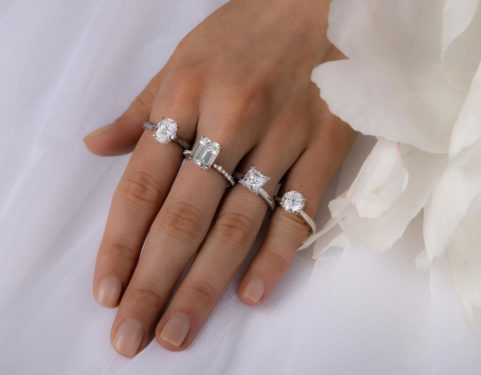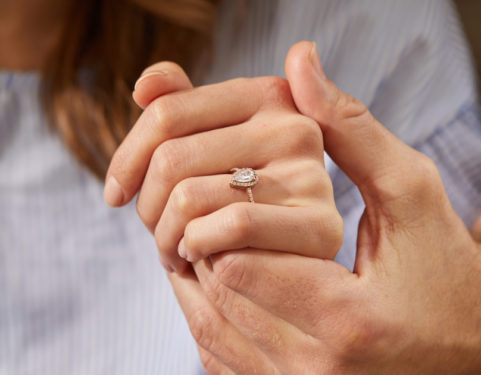Shopping for a diamond involves many considerations, from the shape to the quality to your budget and more! Understanding how the carat price of a diamond affects diamond prices in the diamond industry can help you a lot when shopping for diamond jewelry.
What Does Carat Price Mean?

Diamonds are weighed and then categorized based on their carat weight. It’s like buying a bag of onions and being charged based on the weight.
One carat is the same as one fifth of a gram. The diamond industry has adopted the use of carats because it is a simpler way to measure diamond weights. This measurement is also convenient because many diamonds are in the one- to two- carat range.
The total price of a diamond is calculated by taking the listed price per carat and multiplying that by total carats.
Often, diamonds don’t weigh a simple one or two carats. Instead, they’ll weigh something like 2.16 carats because the weights of natural diamonds aren’t perfect whole numbers.
Why Are Diamonds Priced Per Carat?

If every diamond is unique and has its own unique price, why don’t people just price them all as a total cost instead of figuring out a price per carat?
It is easier to compare diamonds to each other when they are priced per carat. If you compare two diamonds’ total prices, you can’t properly compare the two. The reason for this is that there are too many differences to take into consideration.
You can, however, compare the price per carat. This lets you see the real difference in quality between the diamonds. It also helps to compare the prices of different diamond shapes. Round diamonds will be more expensive than any other shape, as priced per carat.
Simply put, pricing per carat is an industry standard that makes it simpler to compare diamonds.
Cut, Color, Clarity, and Carat Weight
You’ll need to learn about the 4Cs of diamonds to understand how diamond quality is determined. But don’t worry, they’re pretty simple to get the hang of!
Carat Weight
The first C of the 4Cs is carat weight, which is what we’ve been talking about! Carat weight, as previously stated, is the physical weight of the diamond. It usually correlates with size, but this correlation isn’t always exact.
Diamonds are weighed by carat and rounded to a couple of decimal places. This is done to determine their exact weights, which will obviously impact the price of each diamond greatly.
Even though diamonds are priced per carat, a larger diamond will inherently be more costly. Two diamonds with the same quality but different sizes may still have different prices per carat.
Cut

The cut of a diamond is an important factor in determining how sparkly and shiny it will look. This is why you should never sacrifice the cut quality of a diamond to save money– a diamond with a poor cut will never look like the beautiful diamonds you typically see.
Cut can be combined with polish, which is the process of polishing the stone after it is cut. An ideal cut diamond will have the right proportions, correctly aligned facets, and shiny polishing (without polish lines or marks). These factors all come together to create a brilliant diamond.
Color

The color of a diamond actually refers to the absence of color in the diamond, since diamonds are typically supposed to be colorless. A diamond with color will have a slightly yellowish or brownish tint throughout the whole diamond.
Colorless diamonds are truly colorless, which means they will reflect all colors of light and shine super brightly.
Most color tints can usually not be seen under natural lighting, and it takes a trained jewelry specialist to detect it. Color is graded on a scale from D (Colorless) to Z (Light. There are many grades in between, like Near Colorless, in which the color is barely detectable.
Clarity
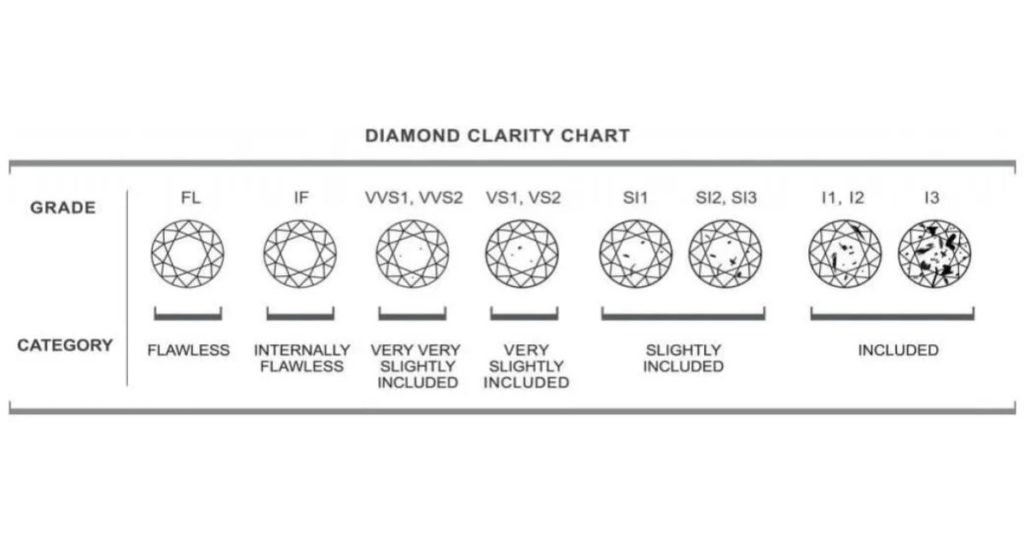
The clarity grade of a diamond is measured on a scale from Flawless to Included, with many grades in between.
A Flawless diamond has absolutely no imperfections or blemishes either on it or inside it. A blemish could be a scratch, nick, or spot on the diamond.
Often, these imperfections are invisible when you look at the diamond normally and can only be seen with magnification. For almost flawless diamonds, people who are untrained may not even be able to see the blemish under magnification. Find out more about diamond clarity with this chart.
How Much Does a 1 Carat Diamond Cost?

A one carat diamond is a typical-sized diamond to buy for an engagement ring or a diamond pendant necklace. It is large enough to look stunning on your ring finger without being too costly for most people.
According to our diamond price chart, mined one carat diamonds can cost anywhere from $3,000 to $18,000, with the upper range representing the highest-quality diamonds.
That price is for one carat diamonds, but if you want to double the size and get a two carat diamond, it’ll cost you anywhere in the range of $13,000 to $38,000.
Your perfect diamond will be priced somewhere in the middle of that range, and many people save money on their diamonds by shopping smart when it comes to the 4Cs.
Lab Grown Diamond Cost
If looking at those prices hurts a little, don’t forget about stunning lab grown diamonds that are entirely real diamonds, just more affordable and 100% ethical.
The price of lab grown 1 carat diamond is around $1,400 to $4,000, which can save you thousands! A lab grown two carat diamond can cost around $4,000 to $9,000, creating savings of almost $30,000 if you look at the top ends of those ranges.
How Much Are Diamonds Worth?

The value of a diamond is created by your love for your partner, the memories your ring holds, and the everlasting relationship you share. Bu you may need to know how much your diamond is worth financially because you’re curious or want to sell it.
Diamond pricing will depend on the 4Cs. But you should also familiarize yourself with the average costs for diamonds. It can be helpful to know what range is reasonable when selling or appraising a diamond.
How Diamond Origin Affects Diamond Pricing

Where your diamond comes from matters a lot, as with any product that must be mined or harvested from the ground. Diamond mines are common all over the world; however, there are a few countries that most diamonds come from.
Many countries in Africa, South Asia, and Russia are major global diamond producers, and if you think about a diamond that was mined in another country getting to you, the production costs add up.
Diamonds must be mined, cut and polished, and finally sent to retailers before they can get to their final destination. This process is lengthy, and because diamonds are becoming rarer, the process will continue to take a long time before you can get a shiny diamond in your hand.
Lab grown diamonds are an alternative to mined diamonds. They have much shorter supply chains and don’t cause harm on their way to your finger.
How Diamond Shape Affects Diamond Prices

Fancy shaped diamonds are very popular because they add personality and uniqueness to any diamond engagement ring. Fortunately for anyone who wants to buy a fancy shaped diamond, they are all less expensive than round diamonds for the same carat weight.
Round diamonds are the most expensive shape, but they’re not the only diamonds that shine. So many other shapes like the oval diamond, princess cut diamond, or emerald diamond are all stunning as well.
Fancy shaped diamonds usually have a lower cost because less rough stone is cut away during the cutting process. This means that less diamond is actually wasted.
This price difference isn’t monstrous, so we don’t recommend choosing a shape solely based on price because they will all generally be around the same price. But if you do want to shop for a fancy shaped diamond, you may save a few hundred dollars that could go towards the setting or a bigger diamond.
Save on Cost: Choose a Lab Grown Diamond
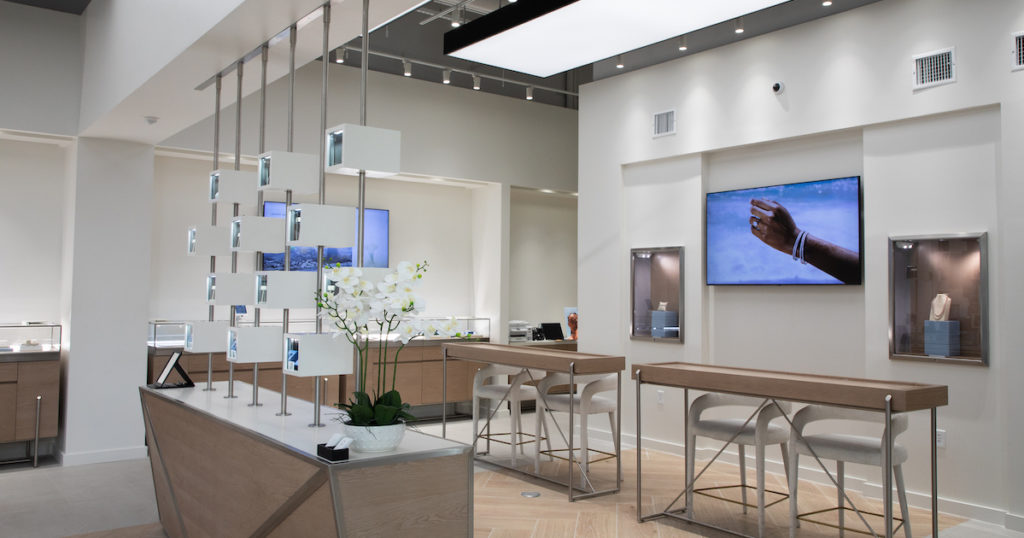
Lab grown diamonds are a great choice for many reasons. If you choose lab grown for your jewelry collection, you know for sure you’re getting the best value for your money. You also know that your purchase is ethical and doesn’t harm the environment. The actual diamond prices will vary greatly from diamond to diamond, but don’t let that overwhelm you!
If you’ve looked at our diamond price guide, you already know how much you can save with lab grown diamonds. That extra money can be used to buy a bigger diamond or fancier setting, cover a down payment on a house, or fund your honeymoon!
You’re in luck, because Clean Origin has the best selection of lab grown diamonds and amazing jewelry pieces designed with love. You can shop for loose diamonds and a ring setting separately, and Clean Origin will set the diamond for you as well as ship it to your home for free!


